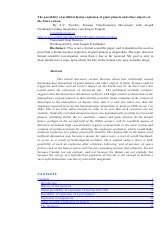Tracking your health is a growing phenomenon. People have historically measured and recorded their health using simple tools: a pencil, paper, a watch and a scale. But with custom spreadsheets, streaming wifi gadgets, and a new generation of people open to sharing information, this tracking is moving online. Pew Internet reports that 70–80% of Internet users go online for health reasons, and Health 2.0 websites are popping up to meet the demand.
David Shatto, an online health enthusiast, wrote in to CureTogether, a health-tracking website, with a common question: “I’m ‘healthy’ but would be interested in tracking my health online. Not sure what this means, or what a ‘healthy’ person should track. What do you recommend?”
There are probably as many answers to this question as there are people who track themselves. The basic measure that apply to most people are:
- sleep
- weight
- calories
- exercise
People who have an illness or condition will also measure things like pain levels, pain frequency, temperature, blood pressure, day of cycle (for women), and results of blood and other biometric tests. Athletes track heart rate, distance, time, speed, location, reps, and other workout-related measures.
Another answer to this question comes from Karina, who writes on Facebook: “It’s just something I do, and need to do, and it’s part of my life. So, in a nutshell, on most days I write down what I ate and drank, how many steps I walked, when I went to bed and when I woke up, my workouts and my pain/medication/treatments. I also write down various comments about meditative activities and, if it’s extreme, my mood.”
Continue reading “The New Rise of Online Health Tracking” »

 I wrote an essay on the theme of the possibility of artificial initiation and fusion explosion of giants planets and other objects of Solar system. It is not a scientific article, but an atempt to collect all nesessary information about this existential risk. I conclude that it could not be ruled out as technical possibility, and could be made later as act of space war, which could clean entire Solar system.
I wrote an essay on the theme of the possibility of artificial initiation and fusion explosion of giants planets and other objects of Solar system. It is not a scientific article, but an atempt to collect all nesessary information about this existential risk. I conclude that it could not be ruled out as technical possibility, and could be made later as act of space war, which could clean entire Solar system.








